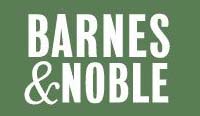
Hello All:
The story told in Deadball first came into focus the winter of 2003, during a drive from Chicago’s Midway Airport to Rock Island, Illinois. Working then for the Department of Justice, I was on my way to review Department of the Army documents for a case being litigated in the United States Court of Federal Claims. My traveling companion, agency counsel for the Army, was kind enough to listen to my concept for the book as we drove along I-88.
After leaving DOJ in October 2006 to be a stay-at-home dad (SAHD), I began work full time on the novel. By the spring of 2007, I had a first draft, the ending of the book having come to me the previous fall while waiting in the parking lot for my youngest son to finish soccer practice.
By the spring of 2010, many drafts and rewrites later, Deadball was, I felt, ready to publish. I was wrong, and for the next year, with the book continually crowning at about 9 cm, I labored to deliver the book for publication.
On November 23, 2011, Deadball arrived. I hope you will buy a copy of the book and read it. I encourage you to post a comment on this website, or a review on Amazon.com.
Please check back here for more blog postings.
DBS




Deadball is like a curve ball that catches you by surprise.
And here I thought I was the only one who venerated the grounds upon which old ballparks sat. I generally avoid fiction of any kind like the plague, but when I saw the rendering of the old Oriole Park entrance superimposed over the present-day row houses now occupying what I always considered hallowed ground, I IMMEDIATELY ordered a copy of the book, if for no other reason than to have a copy of that picture; I fully intend to order another for my Kindle.
Although I’m from Minnesota I, too, have driven to the site of old Oriole Park (and old West Side Grounds in Chicago), closing my eyes and straining to imagine (in color, not black-and-white) what it must have been like to attend a game there in the mid-1890s.
As I was reading your description of what you experienced in the alley, I couldn’t believe just how much it mirrored my own, imagining what it must have been like while it was still a ballpark. I also imagined not only the 19th century Orioles who played there but also visiting players like Ed Delahanty, Cap Anson, Amos Rusie, Cy Young, Roger Conner, Dan Brouthers and all the others who sank their spikes into that very block.
I absolutely love the concept and the fact that, although my wife thinks I’m nuts, there’s SOMEone else whose thoughts parallel my own.
Thank you VERY much, Mr Stinson.
Hello Dave
Thanks much for the kind words about Deadball. It is good to hear from a kindred spirit. I hope you enjoy the rest of the book as well. You’ll see that Byron visits a number of lost ballparks in his quest – all places I have been, which helps insure the accuracy of what I describe in the book. If you’re interested, I have a companion website deadballbaseball.com, which is kind of a then and now look at lost ballparks. I plan to add some new posts in the next few weeks, including posts for Union Park and Memorial Stadium. Send me a line once you finish Deadball. I’d be interested to hear what you think. Regards, DBS